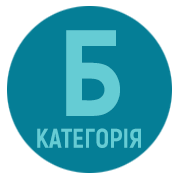Methodological principles of working on the task “Still life in color lighting” in the context of forming competencies in the field of painting for students of higher education in art specialities
DOI:
https://doi.org/10.24195/artstudies.2025-3.9Keywords:
still life under colored lighting, constant color perception, professional com- petencies in field of painting, painting techniquesAbstract
The article reveals the relevance and importance of working on the task of creating a still life in colored lighting conditions in order to acquire professional competencies in the field of painting for students of higher education in art specialties at the Art and Graphic Faculty of the State Institution “South Ukrainian National Pedagogical University named after K. D. Ushynsky.” It shows the methodological principles of creating a still life composition for the most vivid manifestation of color changes. It reveals the significance of visual experiments with changing the lighting of a single still life for the development of a theoretical understanding of the principles of color change in the illuminated and shadowed parts of objects and practical skills of constant perception of the motif. The correspondence of light and shadow colors with the interdependence of complementary (contrasting) colors in the color wheel model is proven.A correlation has been identified between the task of painting still lifes in colored lighting conditions and the subsequent complication of the motif into thematic figurative compositions in conditions of special natural lighting conditions (sunrise or sunset) or artificial lighting (fire, candlelight). Methodological examples of works by European and Odessa artists who focused on the problem of lighting in their work are provided for visual demonstration to students.Scientific novelty: the article is the first to reveal in detail the methodological principles of working on the task “Still life in colored lighting” as a necessary part of the system of forming professional competencies in the field of painting for future artists and teachers of fine arts.
References
1. Губаль, Б. І. (2016). Навчальний посібник «Спеціальний живопис» для студентів освітньо-кваліфікаційного рівня «бакалавр» напряму підготовки 022 «Дизайн» спеціалізації «Дизайн середовища» Івано-Франківськ. URL: http://194.44.152.155/elib/local/3893.pdf
2. Денисенко, С. М. (2021). Теорія кольору: навчальний посібник. Київ: НАУ.
3. Іттен Йоганнес. (2022). Мистецтво кольору: Суб’єктивний досвід і об’єктивне пізнання як шлях до мистецтва. URL: ArtHuss /arthuss.com.ua
4. Лоза, Н. А., Носенко, А. І., Величко, Д. О. (2023). Натюрморт в умовах кольорового освітлення. Методичні рекомендації до навчальної дисципліни «Теорія та практика живопису» для самостійної роботи здобувачів вищої освіти 2-го року навчання спеціальності 014 Середня освіта (Образотворче мистецтво). Одеса.
5. Носенко, А. І., Лоза, Н. А., Величко, Д. О. (2023). Методичні засади формування професійних компетентностей у сфері живопису майбутніх вчителів образотворчого мистецтва на прикладі роботи над завданнями «Натюрморт у холодній та теплій кольоровій гамі». Актуальні питання гуманітарних наук. 66/3. 175–185. https://doi.org/10.24919/2308-4863/66-3-25
6. Носенко, А. І. (2006). Пленер у живописі Одеси другої половини ХХ – початку ХХІ ст. [Автореф. дис. канд. мистецтвозн.]. Харків.
7. Прищенко, С. В. (2009). Кольорознавство: навчальний посібник / за редакцією Є. А. Антоновича. Київ: ВД «Кондор».
8. Прокопович, Т. (2022). Основи кольорознавства: навчальний посібник. Луцьк: Волинський національний університет імені Лесі Українки.








